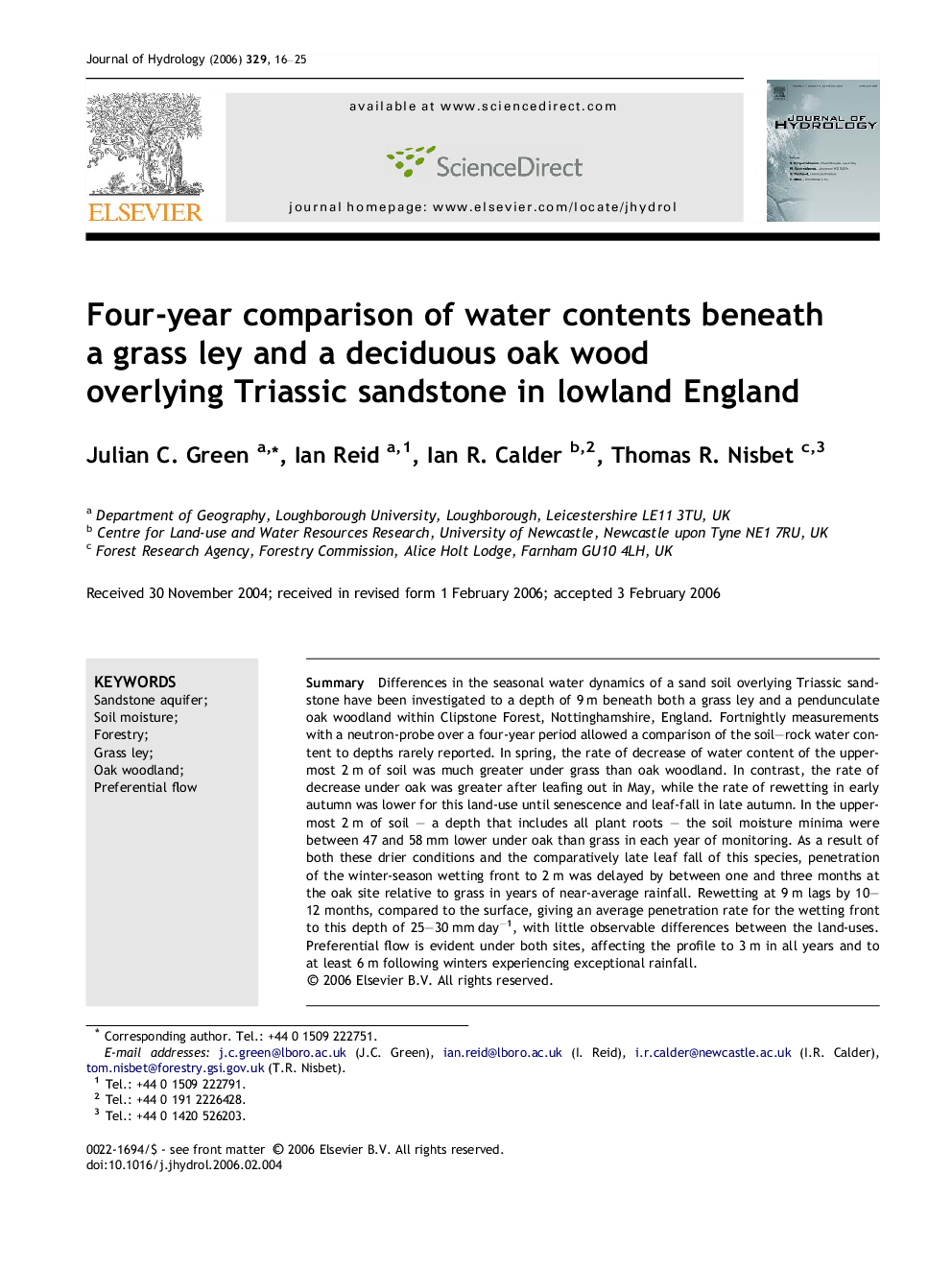| Article ID | Journal | Published Year | Pages | File Type |
|---|---|---|---|---|
| 4580220 | Journal of Hydrology | 2006 | 10 Pages |
SummaryDifferences in the seasonal water dynamics of a sand soil overlying Triassic sandstone have been investigated to a depth of 9 m beneath both a grass ley and a pendunculate oak woodland within Clipstone Forest, Nottinghamshire, England. Fortnightly measurements with a neutron-probe over a four-year period allowed a comparison of the soil–rock water content to depths rarely reported. In spring, the rate of decrease of water content of the uppermost 2 m of soil was much greater under grass than oak woodland. In contrast, the rate of decrease under oak was greater after leafing out in May, while the rate of rewetting in early autumn was lower for this land-use until senescence and leaf-fall in late autumn. In the uppermost 2 m of soil – a depth that includes all plant roots – the soil moisture minima were between 47 and 58 mm lower under oak than grass in each year of monitoring. As a result of both these drier conditions and the comparatively late leaf fall of this species, penetration of the winter-season wetting front to 2 m was delayed by between one and three months at the oak site relative to grass in years of near-average rainfall. Rewetting at 9 m lags by 10–12 months, compared to the surface, giving an average penetration rate for the wetting front to this depth of 25–30 mm day−1, with little observable differences between the land-uses. Preferential flow is evident under both sites, affecting the profile to 3 m in all years and to at least 6 m following winters experiencing exceptional rainfall.
